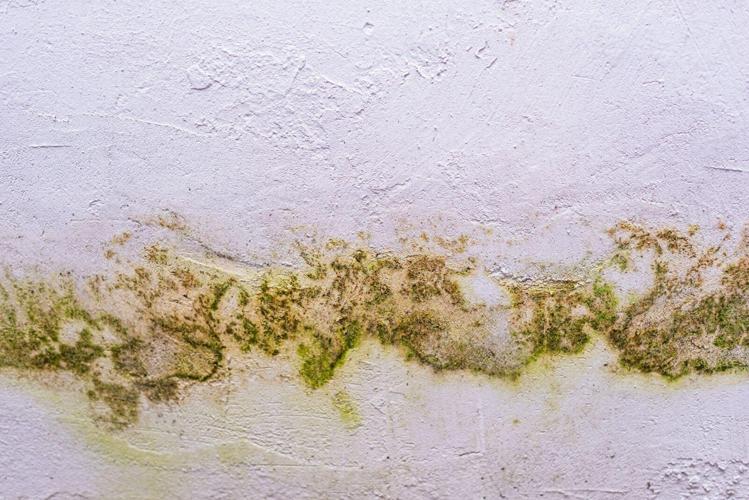
Have you noticed a suspicious dark patch on your bathroom ceiling or a weird smell coming from the laundry room? Well we hate to break it to you, but you might be dealing with mold.
Mold is one of those sneaky problems that can go unnoticed until it’s… everywhere. Around 70% of homes in the US have some form of mold in them. According to FEMA, mold can begin growing just 24 to 48 hours after a surface becomes damp. That’s less than two days after exposure to water.
Understanding what causes mold to grow and how to stop it is important for keeping your home a safe space. In today’s article, you can learn more about what mold is, why it seems to love certain spots in your home, and the practical steps you can take to keep it out for good.
What Is Mold, Anyway?
So, what is mold? Mold is a type of fungus that grows in the form of tiny spores. These spores are all around us. They’re in the air and they enter our homes through windows, vents, and doors. Most of the time, they don’t cause any harm. But when those spores land on damp surfaces and find the right conditions (like warmth, moisture, and organic material), they settle in and start to grow.
There are many types of indoor mold (black mold, green mold, white mold). And they all grow in environments that are rich in moisture.
Why Does Mold Grow Indoors?
Mold needs a few specific things in order to develop. Here are the main ingredients for indoor mold growth:
Moisture
This is the big one. Mold needs moisture in order to grow. Leaky pipes, condensation, floods, damp basements, and even humid air can create the perfect breeding ground. Something as small as a dripping faucet under your sink could be inviting mold in without you realizing it.
Lack of Ventilation
When air isn’t circulating properly, humidity levels can rise. Then, that moisture has nowhere to go and mold takes advantage. Poorly ventilated bathrooms, kitchens, laundry rooms, or even closets are common trouble spots.
Warm Temperatures
Most indoor mold species prefer temperatures between 77°F and 86°F (25°C to 30°C), which, unfortunately, is exactly the temperature we like to keep our homes. So, if you do have mold in your hallway (for example), make sure to keep the temperature lower.
Organic Materials to Feed On
Mold feeds on organic materials. So, it’s more likely to grow on wood, drywall, paper, fabrics, and so on.
Darkness
Mold doesn’t like light. That’s why it usually grows in hidden corners, like behind your furniture. Which can be tricky, because these are places where you won’t notice it.

How to Prevent Mold Growth in Your Home?
Okay, now that we know what causes mold to grow, let’s talk about how you can stop it. The good news? Most mold prevention comes down to managing moisture and airflow.
Control the Humidity Levels
Aim to keep your indoor humidity between 30% and 50%. You can buy a hygrometer to monitor this. If your home tends to feel damp, consider using a dehumidifier, especially in basements or bathrooms.
Fix Leaks Right Away
Don’t ignore a leak, even if it’s small. Slow leaks can cause enough moisture for mold to grow behind walls or under flooring.
Ventilate Properly
Make sure your kitchen and bathroom are equipped with exhaust fans and actually use them (especially during showers or cooking). Open windows when the weather allows it, and don’t forget to crack a door or two when doing laundry.
Dry Wet Areas Fast
After a spill, leak, or flood, dry the area within 24-48 hours. That’s the window that mold needs to grow. Mop up water, use fans, and throw damp items like rugs or towels into the wash.
Make Cleaning a Habit
Stacks of paper, piles of clothes, and general clutter reduce airflow and trap moisture. Plus, dust is food for mold. Cleaning regularly helps limit its food source.
Use Mold-Resistant Products
If you’re renovating or building, consider mold-resistant drywall, insulation, and paints, especially in areas that are more prone to moisture, like bathrooms and basements.
Watch Your Houseplants
While they’re great for air quality, overwatering houseplants or letting water sit in the trays can create damp conditions. Use well-draining soil and don’t overdo it.
Keep Your House Mold-Free
If you’re dealing with mold, don’t worry. There’s always a solution. With some attention to humidity, leaks, and ventilation, you can prevent mold from making itself at home.
Remember: dry, clean, and well-ventilated spaces are mold’s worst nightmare.
If you’ve dealt with mold before, you know how stubborn it can be. But if you work on these simple habits, you’ll be well on your way to keeping your home fresh, safe, and completely fungus-free.



(0) comments
We welcome your comments
Log In
Post a comment as Guest
Keep it Clean. Please avoid obscene, vulgar, lewd, racist or sexually-oriented language.
PLEASE TURN OFF YOUR CAPS LOCK.
Don't Threaten. Threats of harming another person will not be tolerated.
Be Truthful. Don't knowingly lie about anyone or anything.
Be Nice. No racism, sexism or any sort of -ism that is degrading to another person.
Be Proactive. Use the 'Report' link on each comment to let us know of abusive posts.
Share with Us. We'd love to hear eyewitness accounts, the history behind an article.